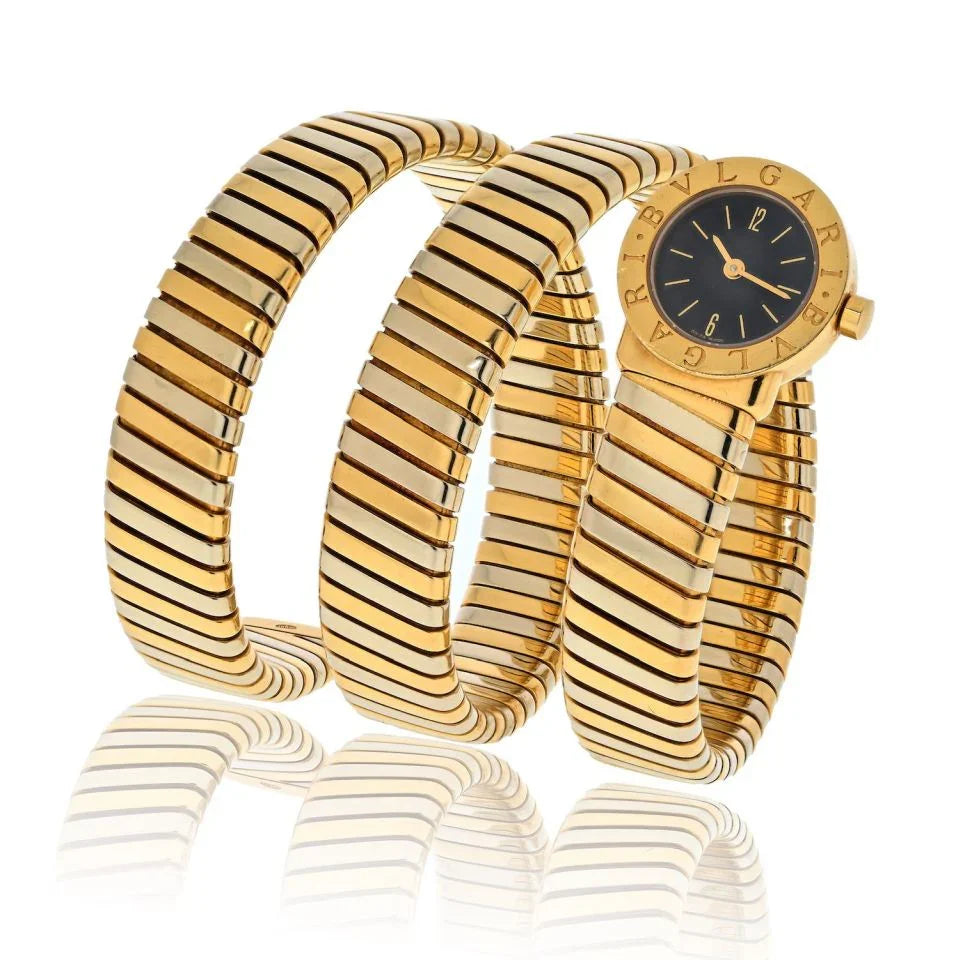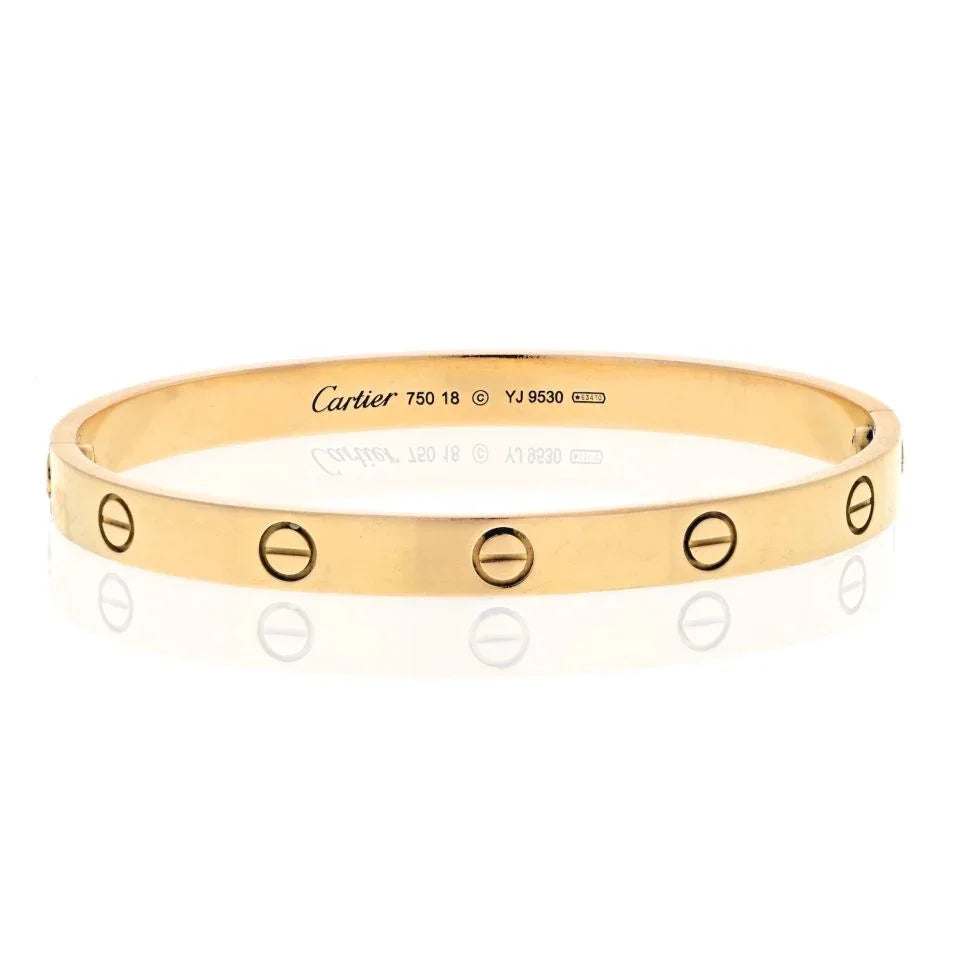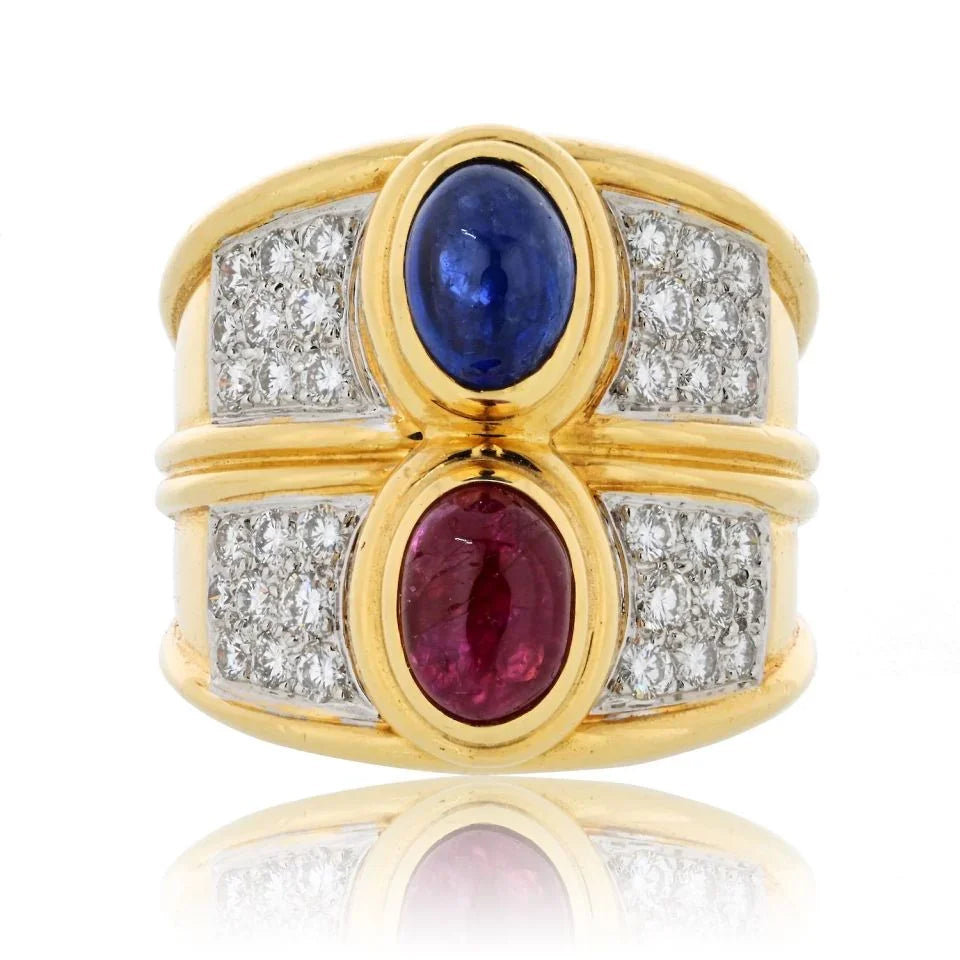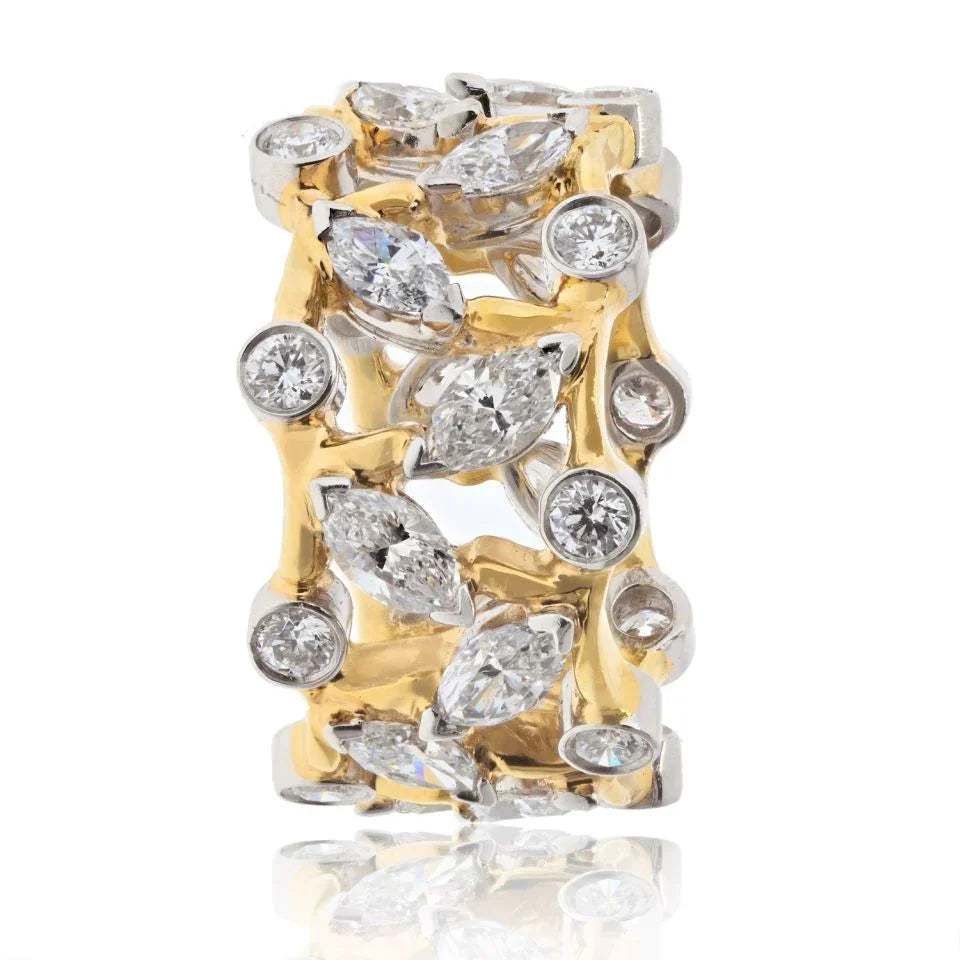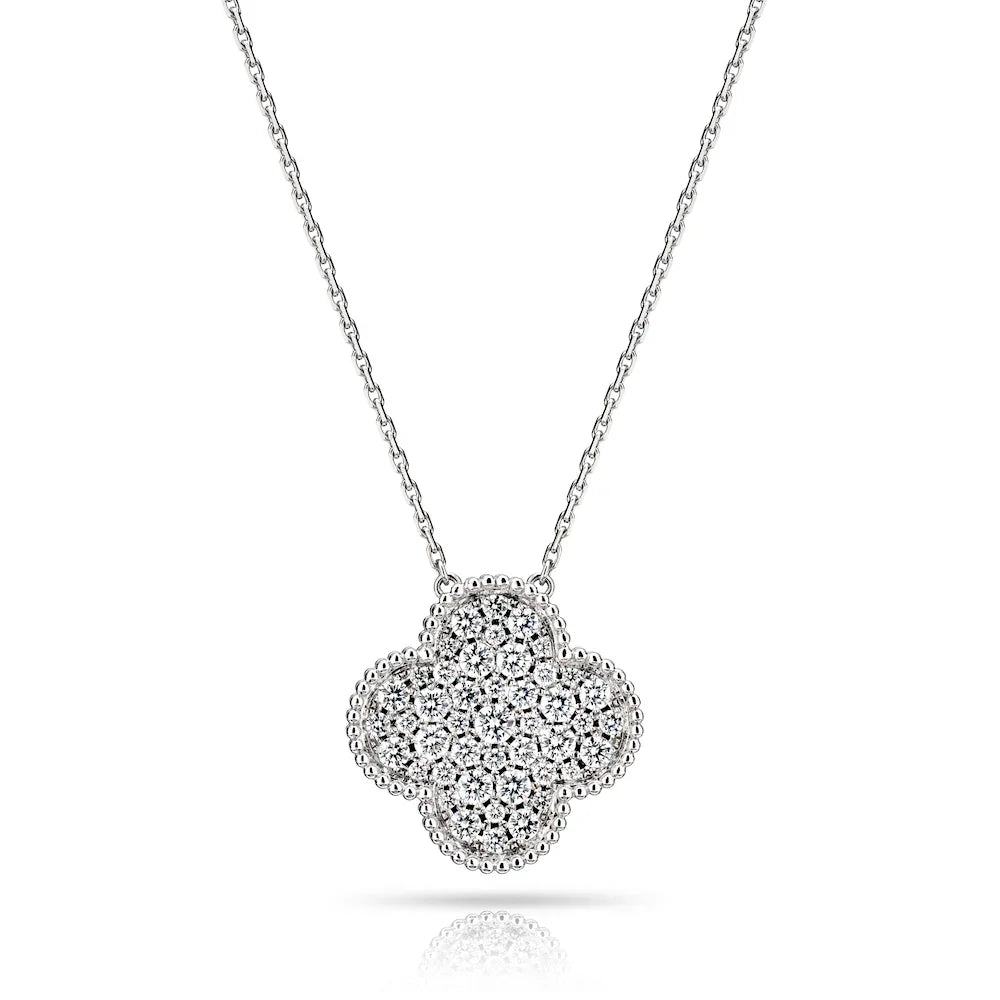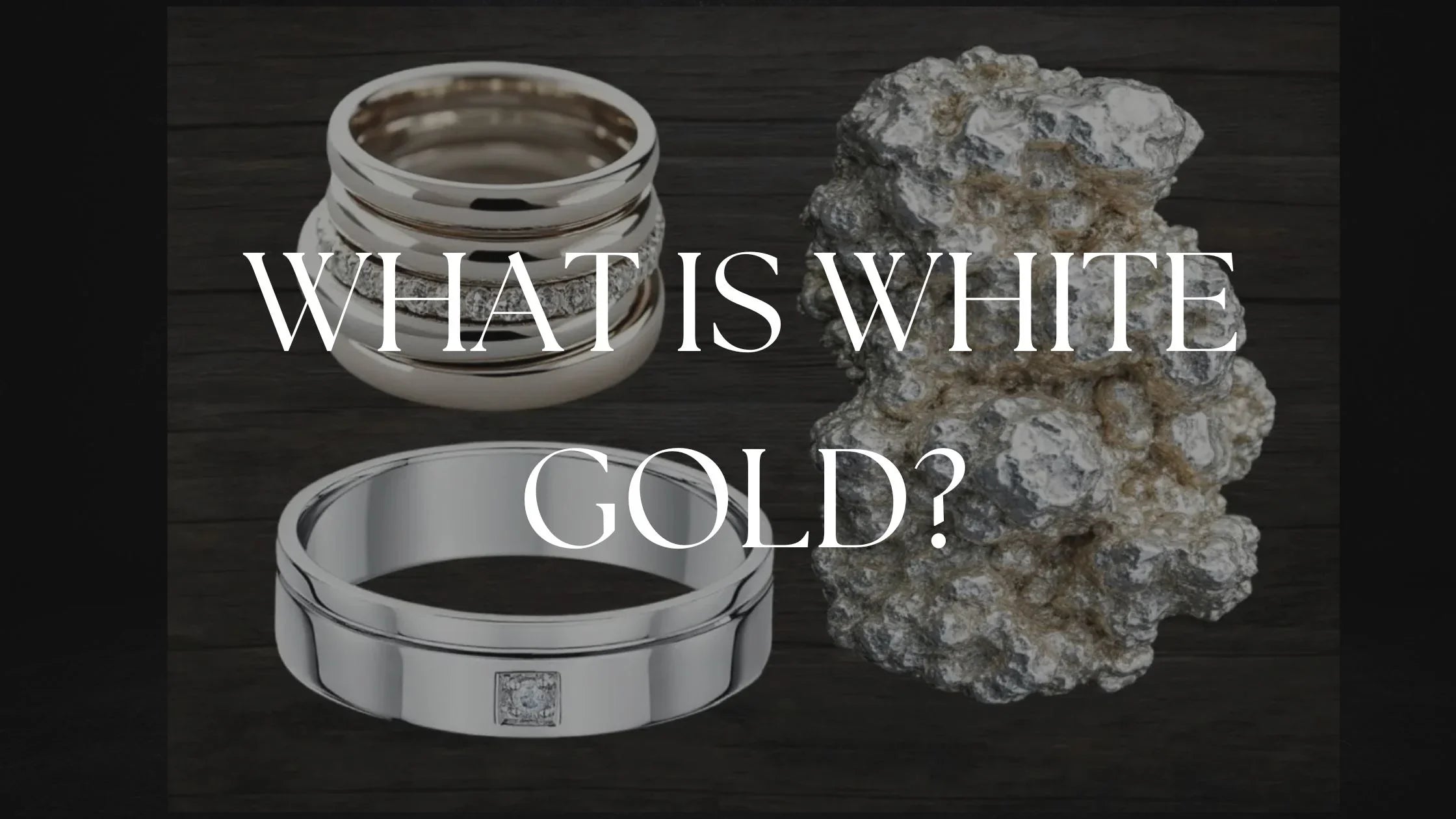White gold has become one of the most sought-after metals in fine jewelry, known for its sophisticated, polished appearance and impressive durability. Despite its name, white gold isn’t a naturally occurring metal; it’s an alloy created by blending pure gold with metals like palladium, nickel, or silver to achieve its striking silvery-white hue. Jewelers often coat it with a layer of rhodium, adding extra shine and protection. This gives white gold the look of platinum while offering a more affordable option.
Its versatility and timeless appeal make it a favorite for engagement rings, wedding bands, and other fine jewelry. The modern, clean aesthetic of white gold attracts those who value both luxury and practicality. Whether you’re drawn to its cool, sophisticated tone or its ability to withstand everyday wear, white gold proves to be a brilliant choice.
In this article, we’ll explore the composition, appearance, and primary uses of white gold, so you can understand why this alloy remains a top pick for jewelry lovers worldwide.
The Composition of White Gold
White gold is created by blending pure gold with other metals to achieve its distinctive silvery-white appearance. Since pure gold is naturally yellow, mixing it with metals like nickel, palladium, and silver helps give it both strength and a sleek, white color. Nickel is often used for its strength and ability to brighten the hue, while palladium resists tarnish and adds durability. Silver contributes shine and flexibility to the mix.
After the alloy is formed, it’s typically coated with a layer of rhodium, a precious metal from the platinum family. Rhodium plating gives white gold its bright, shiny finish and adds a protective layer, helping the jewelry resist scratches and tarnish. This rhodium layer also enhances the jewelry's platinum-like appearance, making it a popular choice for those who love the look of platinum but want a more affordable option.
The History of White Gold
White gold’s rise to popularity began in the 1920s, when it became an attractive alternative to platinum. While platinum was prized for its rarity and durability, it was also expensive, making it inaccessible for many. White gold, with its similar appearance and durability, offered a more affordable option while still maintaining a luxurious look.
During this time, white gold was widely adopted for engagement rings, wedding bands, and fine jewelry. Its sleek, modern appeal perfectly suited the Art Deco period, with its clean lines and bold designs. Over the years, as platinum’s prices continued to rise, white gold grew in popularity, becoming a go-to choice for those seeking elegant yet more budget-friendly jewelry.
How White Gold is Made
Making white gold begins with mixing pure gold with metals like nickel, palladium, or silver to create an alloy. The precise mix varies depending on the desired properties, such as color, strength, and tarnish resistance. Once the alloy is formed, it’s melted and shaped into jewelry pieces.
The final touch is rhodium plating, which gives white gold its signature shiny finish. The jewelry is dipped into a rhodium solution, which bonds to the surface and enhances its brilliance. Rhodium plating also protects the jewelry from daily wear and tear. However, this plating can wear off over time, so it may need to be reapplied to maintain the jewelry’s sparkling look.
Characteristics of White Gold
White gold is a unique and versatile metal that combines the luxurious appeal of gold with the modern look of silver. Its striking, silvery-white color makes it a popular choice for contemporary jewelry, while its durability and hypoallergenic properties add to its practical appeal. White gold's physical and chemical properties make it stand out, offering the perfect balance between beauty, strength, and comfort. Let's explore these characteristics in more detail.
Durability and Maintenance
White gold is highly durable, making it a great choice for jewelry that’s worn daily, such as engagement rings and wedding bands. Compared to yellow and rose gold, white gold is often stronger and more resistant to scratching, thanks to the alloying metals used to create its white color. The addition of metals like nickel and palladium increases its strength, making it tougher than yellow or rose gold, which is softer due to the higher percentage of pure gold.
However, the rhodium plating that gives white gold its bright, shiny finish can wear off over time, especially with frequent exposure to water, lotions, or everyday wear. This means that while white gold maintains its beauty and durability, it may require replating every few years to restore its lustrous sheen. Replating is a simple process that involves adding a fresh layer of rhodium to the surface of the jewelry, ensuring it stays as brilliant as the day it was made.
Does White Gold Tarnish?
One of the most common concerns about white gold is whether it tarnishes over time. While pure gold does not tarnish, white gold is an alloy, and its durability depends on the specific metals mixed with it. Nickel-based white gold can be more prone to tarnishing, but generally, white gold does not tarnish in the way silver does.
However, white gold may develop a slight yellowing or dullness as the rhodium plating begins to wear away. This is often confused with tarnishing, but it is simply the rhodium layer fading. To manage this, regular cleaning can help maintain its shine, and if the yellowing persists, you can have the piece replated with rhodium for a fresh, shiny finish. Keeping your jewelry in a dry place and avoiding exposure to harsh chemicals can also help prevent this from happening too quickly.
Hypoallergenic Properties of White Gold
Many people with sensitive skin turn to white gold because of its hypoallergenic properties. Unlike yellow gold, which can contain higher levels of nickel, white gold is often mixed with nickel-free alloys like palladium or silver. These alloys make white gold a safer choice for those prone to allergic reactions. However, some white gold pieces, particularly those made with nickel-based alloys, can cause skin irritation for individuals with nickel sensitivities.
If you have sensitive skin, it's important to choose white gold jewelry that uses nickel-free alloys to avoid discomfort. Many jewelers now offer hypoallergenic white gold options that are ideal for people with skin allergies, ensuring you can enjoy your beautiful jewelry without worry. Always check with the jeweler to ensure the piece is made from nickel-free alloys, especially if you have known sensitivities.
White Gold vs. Other Metals
When choosing a metal for your jewelry, it's important to consider factors like cost, durability, and aesthetics. White gold is often compared to other popular metals like platinum, silver, and yellow gold. Each metal has its own set of advantages, so understanding the differences can help you make the best choice for your style and needs. Let’s compare white gold to these alternatives on key aspects like appearance, cost, durability, and maintenance.
White Gold vs. Platinum
White gold and platinum share a similar aesthetic—both have a sleek, silvery-white appearance that’s perfect for modern jewelry. However, they differ in a few important ways. Platinum is denser and heavier than white gold, which can make platinum jewelry feel more substantial on the hand. While white gold is lighter, it’s still durable, though platinum is generally considered more durable because it is naturally resistant to scratches and tarnish.
Price is another significant difference. Platinum is usually much more expensive than white gold due to its rarity and density. Hypoallergenic properties are also a consideration—while both metals can be hypoallergenic, platinum is naturally more hypoallergenic since it is purer and does not require alloying with nickel, which can sometimes cause allergic reactions.
In short, white gold offers a similar look to platinum but at a more affordable price point, making it a good option for those who want the platinum look without the high cost.
White Gold vs. Silver
White gold and silver have a similar appearance—both feature a shiny, silvery finish that can be mistaken for each other at first glance. However, silver is much softer than white gold, making it more prone to scratches and dents. Silver also tarnishes over time, developing a dull, yellowish film when exposed to air and moisture, whereas white gold maintains its shine longer, especially if coated with rhodium plating.
When it comes to cost, silver is significantly less expensive than white gold, making it a more budget-friendly option. However, the durability of silver is much lower, and it will require more frequent cleaning and care to prevent tarnishing. White gold, on the other hand, offers both elegance and durability for those willing to invest a little more.
White Gold vs. Yellow Gold
The key difference between white gold and yellow gold lies in the appearance. While yellow gold offers a rich, warm, and traditional look, white gold has a cooler, more contemporary aesthetic with a silvery sheen. Durability-wise, white gold tends to be stronger than yellow gold because it’s alloyed with other metals to make it more durable. Yellow gold, being softer, is more prone to scratches and dents.
If you prefer a classic, warm tone, yellow gold might be the way to go. However, if you're looking for something modern, with added strength and durability, white gold is an excellent choice. White gold also pairs better with diamonds and other gemstones, especially in engagement rings and wedding bands, due to its clean, neutral hue.
Comparison Table of Metals
Let’s look at the key differences between white gold, platinum, silver, and yellow gold:
|
Feature |
White Gold |
Platinum |
Silver |
Yellow Gold |
|
Cost |
Moderate |
High |
Low |
Moderate to High |
|
Durability |
Durable, needs rhodium replating |
Extremely durable, scratch-resistant |
Soft, scratches easily |
Softer, scratches easily |
|
Weight |
Light |
Heavier than white gold |
Light |
Medium |
|
Tarnishing |
Rhodium plating prevents tarnish |
Does not tarnish |
Tarnishes over time |
Tarnishes over time |
|
Hypoallergenic |
Can be hypoallergenic (nickel-free options available) |
Naturally hypoallergenic |
May cause reactions due to alloys |
Hypoallergenic for most |
|
Aesthetic |
Silvery-white, modern |
Silvery-white, luxurious |
Bright, shiny, softer appearance |
Warm, classic gold tone |
Common Uses of White Gold
White gold is an incredibly versatile metal used in a wide range of jewelry pieces, from classic engagement rings to elegant necklaces. Its sleek, modern appearance and durability make it a popular choice for a variety of designs. Whether you're looking for a timeless wedding band or a stylish pair of earrings, white gold offers both luxury and practicality. Let’s take a closer look at some of the most common uses of white gold in jewelry.
White Gold Wedding Bands and Engagement Rings
White gold is one of the most popular choices for wedding bands and engagement rings due to its elegant appearance and strength. The cool, sophisticated hue of white gold complements diamonds and other gemstones beautifully, making it a top pick for engagement rings. The metal’s durability also ensures that these cherished pieces can stand up to daily wear without losing their shine.
One of the main reasons white gold is favored for wedding jewelry is its ability to be customized. Many couples choose to add personal touches, such as diamond settings, engravings, or unique band shapes. White gold’s ability to be molded into a variety of designs allows for endless possibilities when creating the perfect ring. Additionally, the rhodium plating on white gold enhances its brilliance, ensuring that the jewelry remains dazzling throughout the years.
White Gold Chains and Necklaces
White gold is also a popular material for chains and necklaces, offering a sleek, contemporary look. Whether you’re looking for a delicate pendant necklace or a bold statement piece, white gold adds a refined elegance to any design.
Some of the most popular styles include snake chains, which offer a smooth, fluid look, and box chains, which provide a sturdy and geometric design. For those seeking something more intricate, twisted or rope chains made of white gold add texture and dimension. These necklaces are versatile and can be paired with a variety of pendants, from classic diamonds to more modern, minimalist designs.
White Gold Earrings and Bracelets
White gold is also a favorite for earrings and bracelets, thanks to its ability to blend well with a wide variety of gemstones and styles. Stud earrings featuring diamonds or sapphires set in white gold are timeless and perfect for everyday wear. On the other hand, chandelier earrings or hoops made from white gold offer a more dramatic, elegant look for special occasions.
For bracelets, white gold offers a beautiful, durable option that can range from simple bangle styles to more intricate link bracelets. The clean, bright finish of white gold enhances the beauty of diamond bracelets or gemstone cuffs, making them a popular choice for both casual and formal wear. Whether you're looking for something understated or bold, white gold bracelets and earrings elevate any jewelry collection.
Is White Gold Ethical?
The ethics of white gold production largely depend on the sourcing of the metals used to create the alloy, particularly the gold itself. In recent years, there has been an increasing demand for sustainable sourcing and ethical mining practices in the jewelry industry. Many jewelers now offer fair-trade or recycled gold options, ensuring that the gold used in their jewelry comes from responsible sources that prioritize the well-being of both people and the planet.
Recycled gold, which is made by melting down old jewelry and reusing the metal, is an environmentally-friendly choice and significantly reduces the need for new mining. Additionally, ethical jewelry brands often ensure that workers in the supply chain are treated fairly and work in safe conditions. If sustainability and ethical sourcing are important to you, be sure to inquire about a jeweler's practices when purchasing white gold jewelry.
FAQs About White Gold
Is White Gold Real Gold?
Yes, white gold is real gold. It’s an alloy made by combining pure gold with metals like nickel or palladium to create a silvery-white color. The karat system indicates the gold content, with 18k white gold containing 75% gold.
Does White Gold Turn Yellow Over Time?
White gold itself doesn’t turn yellow, but its rhodium plating can wear off over time, revealing the underlying gold alloy. Replating with rhodium restores its bright, white shine, and is often needed every few years.
Is White Gold Expensive?
White gold is more affordable than platinum but more expensive than silver. Its cost depends on factors like the karat of gold used and the rhodium plating applied.
Is White Gold Hypoallergenic?
White gold can be hypoallergenic, depending on the alloy used. Nickel-free alloys (like palladium) are ideal for sensitive skin, while nickel-based alloys can cause reactions in people with nickel allergies.
Conclusion
White gold is a stunning and versatile choice for anyone seeking a sleek, modern look without the premium price of platinum. Its striking silvery-white hue, created by blending pure gold with other metals like nickel or palladium, gives it an elegant appeal that suits everything from engagement rings to necklaces. Though it remains durable and timeless, rhodium replating every few years will keep it looking fresh and brilliant.
When choosing white gold jewelry, think about your personal style, sensitivity to metals, and how you plan to wear the piece. If you have sensitive skin, opt for nickel-free alloys to avoid irritation. Whether you're drawn to its classic appeal for wedding jewelry or its modern shine for everyday pieces, white gold offers both luxury and practicality. With its perfect blend of beauty, strength, and versatility, white gold is an excellent choice to elevate any jewelry collection.

